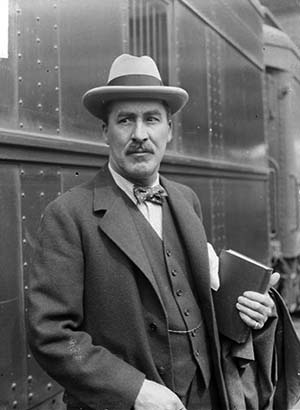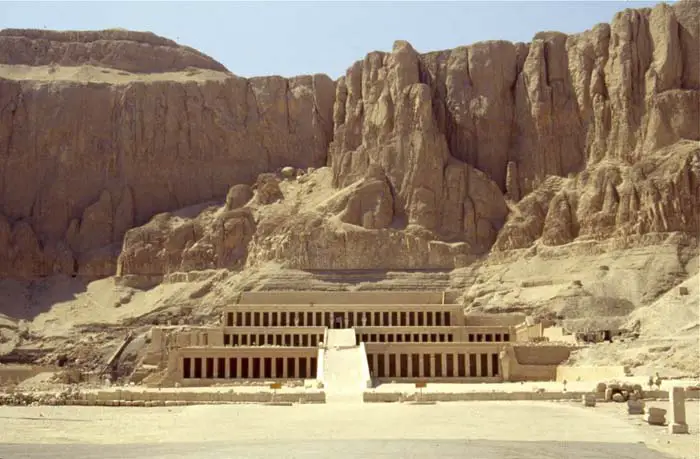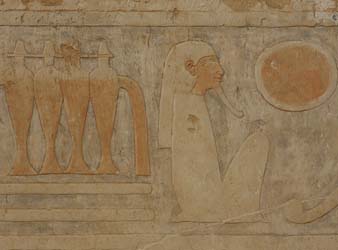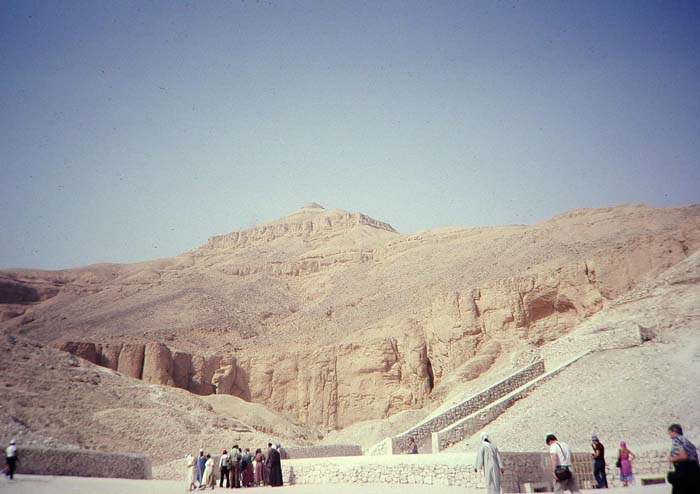Howard Carter
King Tutankhamun is perhaps one of the best known pharaohs from ancient Egyptian history. If not for the discovery of his tomb by Howard Carter, the world might never know all there is to know about the now-famous Boy King.
Who was Howard Carter?
Born in Kensington, London, on May 9th, 1874, Howard Carter was the son of artist, Samuel John Carter. As the youngest of 11 children, Howard was home schooled at his aunt’s home in Norfolk and from an early age he displayed a creative streak of his own.

Howard Carter
Samuel taught his son all he could about painting and drawing and Howard would often watch his father paint in the home of Samuel’s patrons, William and Lady Amherst. However, when he became bored, he wandered into the Amherst's Egyptian room, where it is likely his passion for ancient Egypt began.
The Amherst recommended that Howard work in Egypt (not only for his talent but also for his health). It was then when he set sail out of England to Alexandria, Egypt at the age of 17, to become a tracer for the Egyptian Exploration Fund. As a tracer, Howard drew diagrams and drawings of crucial ancient Egyptian finds.
Howard took his work very seriously. His first assignment at Bani Hassan involved copying scenes from the tomb walls of the princes of Middle Egypt (2,000 B.C) depicted there. Howard worked painstakingly through the daylight hours, and then slept in the tombs with the bats at night.
Howard’s Career Path & Other Work
In time, Howard became acquainted with William Flinders Petrie, a famous archaeologist in his own right. Under Petrie’s tutelage, Howard explored such sites as the Temple of Queen Hatshepsut, the Tomb of Tuthmosis IV, the cemetery of 18th Dynasty Queens, and the Theban Necropolis.
During his time exploring and researching Queen Hatshepsut’s tomb, the Egyptian Exploration Fund made Howard principal archaeologist, and he was able to fully perfect his excavation, drawing and restoration skills.

© Charlie Phillips - The Temple of Hatshepsut
Just eight years after setting sail to Egypt, at the age of 25, Howard was named First Inspector General of the Monuments of Upper Egypt. This impressive position put Howard in a supervisory position for archaeological digs along the Nile River. On behalf of American lawyer and archaeologist Theodore David, Howard supervised the exploration of the Valley of the Kings.
As First Inspector, he also helped to add lights to six tombs. In 1903, he was now headquartered at Saqqara and was appointed Inspectorate of Lower and Middle Egypt, but was forced to resign two years later after a dispute between tourists and Egyptian guards.

© Ian Gampon - Reliefs at the Temple of Hatshepsut
The Discovery of Tutankhamun's Tomb
After Howard resigned, he worked for a couple of years as a commercial painter and even a tourist guide. These years were hard for him because he was unable to participate in the passion he loved.
However, in 1907, he was introduced to Lord Carnarvon, who had the funds to continue Howard’s excavations. Together, they discovered six tombs on the West Bank of Luxor, as well as in the Valley of the Kings.
Through the years, Howard became more and more obsessed with finding King Tut’s tomb. In 1922, frustrated by Carter’s inability to find the boy king’s tomb, Lord Carnarvon issued an ultimatum. 1922 would be his last year of funding.

© Jimmy Smith - Entrance to the Tomb of Tutankhamun
There is a fine line between luck and persistence because after just three days of digging during his final season, Howard unearthed a staircase that let into King Tutankhamun’s tomb. In fact, three weeks later, on November 26, 1922, Howard Carter opened the tomb door to make one of the most highly-regarded discoveries of the 20th century.
Howard Carter spent months cataloging all of the “wonderful things” (as Howard called them) inside King Tutankhamun’s tomb. It was the best preserved tomb to ever be found and was filled with gold artifacts, as well as King Tut’s sarcophagus within the burial chamber.

© Thomas Quine - Treasure from Tutankhamun's Tomb
Facts about Howard Carter
- Due to his great find, Howard Carter became a celebrity and toured and lectured in the United States.
- He worked on King Tut’s tomb until 1932, a full ten years after discovering it.
- Howard was a sickly child and London weather did not suit him.
- Howard’s discovery of King Tut’s tomb reignited the world’s fascination for ancient Egyptian history.
- While unwrapping King Tut’s mummified remains, the Boy King’s skull fell out of the tomb, the impact of which made a dent on the skull.
- Howard received an honorary degree of Doctor of Science from Yale University.
- Howard used a grid-block system during his excavations. He and his associates had removed approximately 70,000 tons of gravel and sand before finding King Tut’s tomb.
- Upon entering King Tut’s tomb, Lord Carnarvon asked Howard if he could see anything, Howard replied, “Yes, wonderful things”.
- After his retirement, Howard collected antiquities.
- He died at the age of 64, in 1939, of lymphoma and is buried in Putney Vale Cemetery in London.
- “The Curse of King Tut’s Tomb” is often put to rest by the fact that such a long period of time came between the discovery of the tomb (1922) and Howard’s death (1939).
